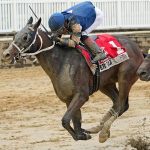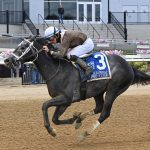LAUREL PARK GETS GREEN LIGHT TO RESUME RACING
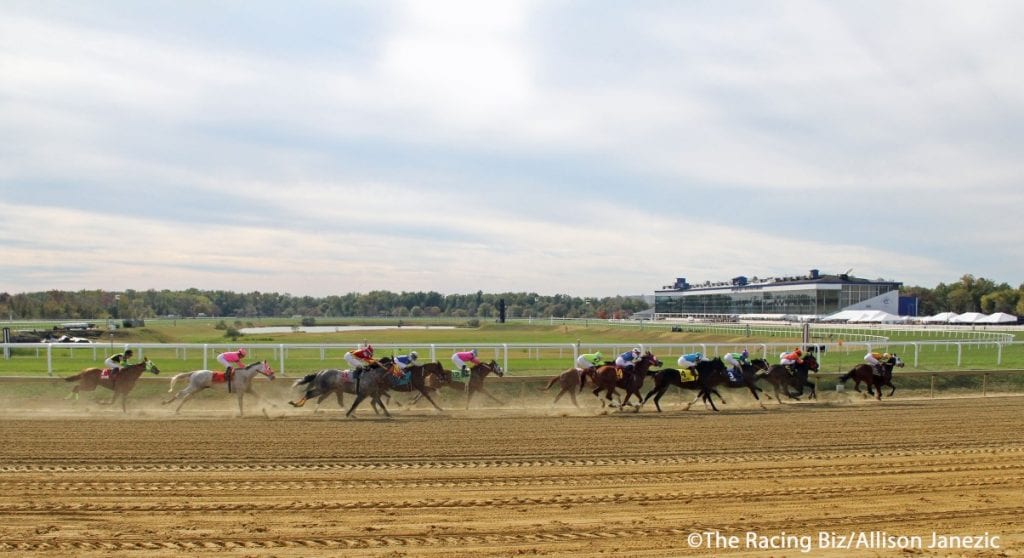
At a special virtual meeting Dec. 14, the Maryland Racing Commission permitted the Maryland Jockey Club to resume racing Thursday, Dec. 16. It will be the first day of live racing in Maryland since Nov. 28.
In fact, the Commission took no action, which had the effect of permitting racing to return.
“The purpose of the day is simply to make certain that we were in a posture to move forward,“ said Commission chairman Michael Algeo, explaining that the Commission’s silence signaled its assent to the resumption of racing. “I don’t see, personally, any reason why we would not move forward. So there’s really nothing for us to do: we would only be involved in terms of taking action if were going to not approve this weekend’s card.”
No Commissioners spoke up to disagree.
Racing had been shut down in the wake of a three-week period which saw eight training or racing fatalities at the central Maryland facility. That group included three two-year-olds and seven horses that had made seven or fewer career starts.
The shutdown prompted a frenzied effort to get the track back into racing shape. The core group of experts involved included former Maryland Jockey Club track super John Passero, who was retained by the Maryland Thoroughbred Horsemen’s Association to assist; along with NYRA’s Glen Kozak, Dr. Mick Peterson of the University of Kentucky, and Santa Anita track super Dennis Moore; as well as current MJC trackman Chris Bosley.
The Maryland Jockey Club and parent company 1/ST Racing had sought permission to resume racing this week at last week’s regularly scheduled Commission meeting. But Commissioners, fearing a rush to a preordained outcome, demurred, calling instead for today’s virtual meeting specifically devoted to the track surface. More than 100 people were on the call.
During today’s meeting, the Commission heard from a variety of stakeholders that included jockeys Xavier Perez, Victor Carrasco, and Richard Monterrey. All three agreed the track is vastly superior to what they were experiencing before the most recent shutdown.
- Video: Copper Tax’s Tesio troubles
 Copper Tax had all sorts of challenges in Saturday’s Federico Tesio Stakes and overcame them all. How tough a trip? We break it down.
Copper Tax had all sorts of challenges in Saturday’s Federico Tesio Stakes and overcame them all. How tough a trip? We break it down.
“The difference in the surface of the track is 20 times better than what it was,” said Perez.
“I feel like the track is in a great shape,” Carrasco agreed. “It seems like we’re going in the right direction.”
More than 200 horses have posted recorded breezes over the surface since it fully reopened Friday, Dec. 10. Several of those were horses that Perez breezed for trainer Jerry Robb.
“All those horses just get a good feeling on the track,” the rider said. “My opinion is the track is just perfect.”
Trainer Tim Keefe, the president of the MTHA and a Laurel-based trainer, said he concurred with the riders.
“We’re definitely seeing a different racetrack out here,” Keefe said. “I worked horses Friday, Saturday, and Sunday without incident, without problems… And the feedback I’m getting from the other horsemen and jockeys has also been positive.”
Perhaps the most important testimony from the Commission’s standpoint, though, came from two of those outside experts involved in the track work: Glen Kozak and John Passero. Kozak had been on-site previously, while Passero said he has been at the track every morning.
Algeo asked both men if it was their “conclusion within a reasonable degree of scientific certainty” that racing could proceed safely over the surface. Both said that was their conclusion.
“Everything’s looking good this morning, and the works and the times are an indicator of things going in the right direction,” Passero said. “I couldn’t be happier.”
Passero said that changes in the composition of the cushion of the track include the addition of “more of a medium-coarse sand to give it some body.”
“We’re going back to a system that I used to use: plenty of depth,” he said. “It seems to be very kind to horses.”
“It certainly is a different track than it was a week ago when I saw it,” Kozak said. “And, again, it all sounds like it’s heading in the right direction.”
- “Something from Grandmother” helps Post Time win Carter
 Family connections abounded as Post Time won the Carter, and owner Ellen Charles thinks her star may get a little bit extra from that.
Family connections abounded as Post Time won the Carter, and owner Ellen Charles thinks her star may get a little bit extra from that.
The shutdown that’s about to end was the second this year because of track surface issues at Laurel Park. The MJC previously closed the track in mid-April for several months. While training resumed there in early August, racing did not come back until September.
One issue that several attendees cited Tuesday was the imperative to ensure that, as Algeo put it, “we’re not back here again.”
“One of the things that bothered me the most, still bothers me, is the fact that this last collection of tragedies should have been forewarned when the horsemen started screaming that the racetrack was too fast,” said Commissioner Tom Bowman, a veterinarian and breeder.
Bowman, who’s head of the Commission’s safety and welfare subcommittee, said he hopes to create an information “collection system” to enable the Commission and other stakeholders to identify and respond to trends before they become tragedies.
Post time for Thursday’s card is 12:25 p.m., and it’s fair to say a lot of people in the racing community will have fingers crossed and rabbit’s feet clutched in hopes of a safe return to action.
“We’re glad to be up and running again,” Algeo said. “I can conclude by saying: Riders up. Here we go.”
MORE ON THE TRACK SUFACE
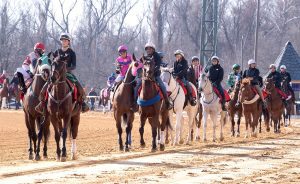
HISA report finds “no singular cause” of Laurel spring fatalities
A new Horseracing Integrity and Safety Authority (HISA) report on Laurel Park’s spring fatalites finds no one cause but some notable facts.
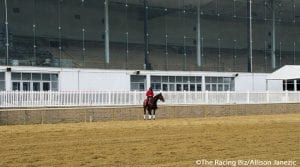
What’s being done to Laurel Park track: “A good cushion serves one purpose”
To hear horsemen tell it, track man John Passero has worked wonders in a short time at Laurel Park. What’s he doing that’s made such a difference?
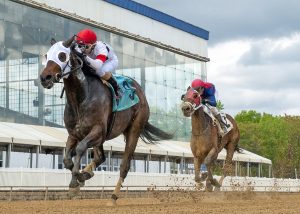

Smooth track, smooth return to racing at Laurel Park
There were sighs of relief as Laurel Park resumed racing and horsemen praised what they say is an improving dirt racing strip.
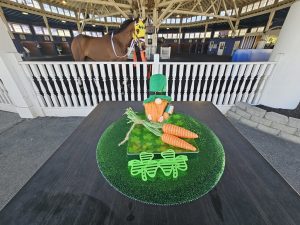

Maryland horsemen, track owner see injury issue differently
Recent injuries at Laurel Park stem from issues with the racing surface, Maryland horsemen say — a position the track owner seems not to share.
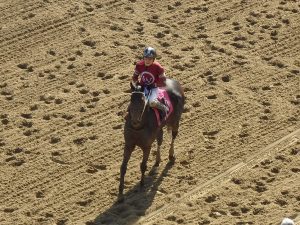

Laurel Park: Racing “ain’t gonna happen unless MRC feels it’s safe”
In a spirited meeting Tuesday, the Maryland Racing Commission indicated that it intends to take a more assertive role on the Laurel Park track surface.



Laurel Park to cancel weekend’s racing
Faced with a sudden cluster of racing and training fatalities, Laurel Park will not race December 3-5 as officials scramble to get ahead of the problem.




